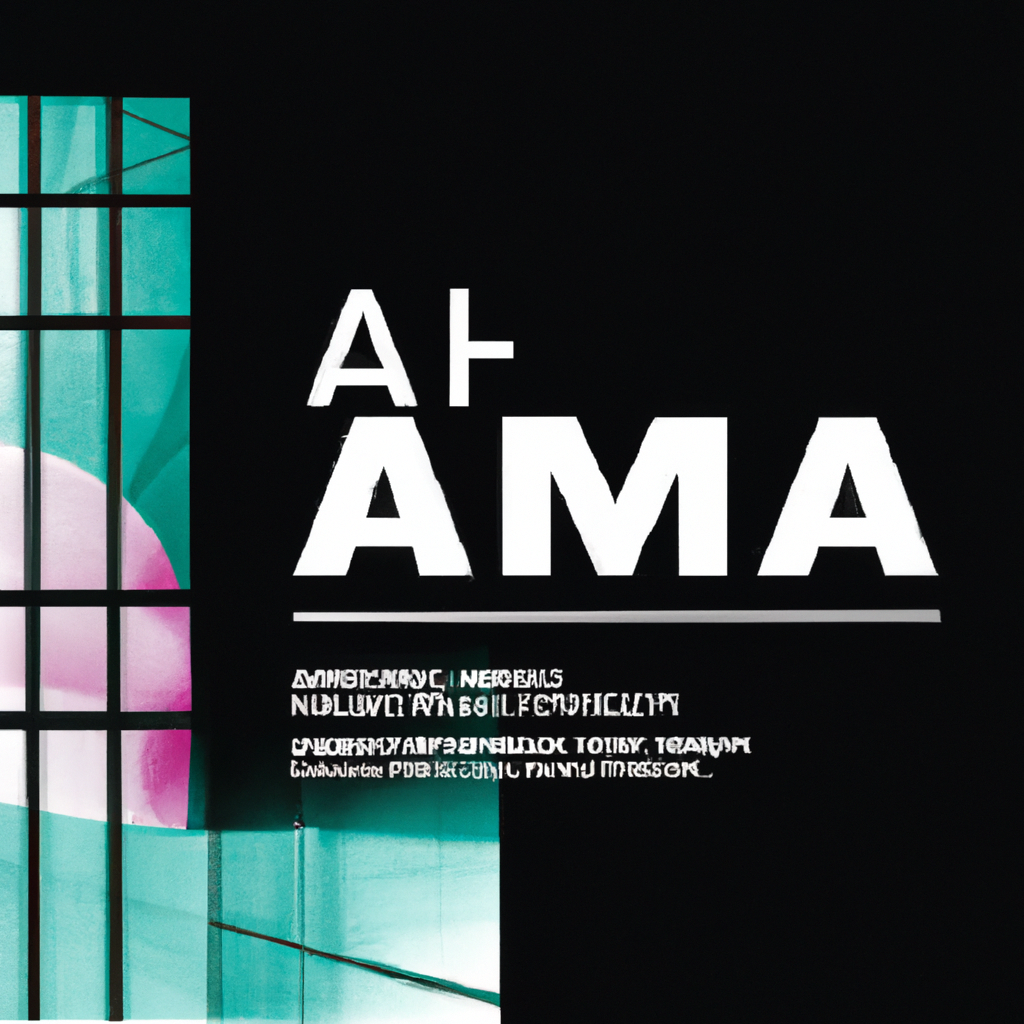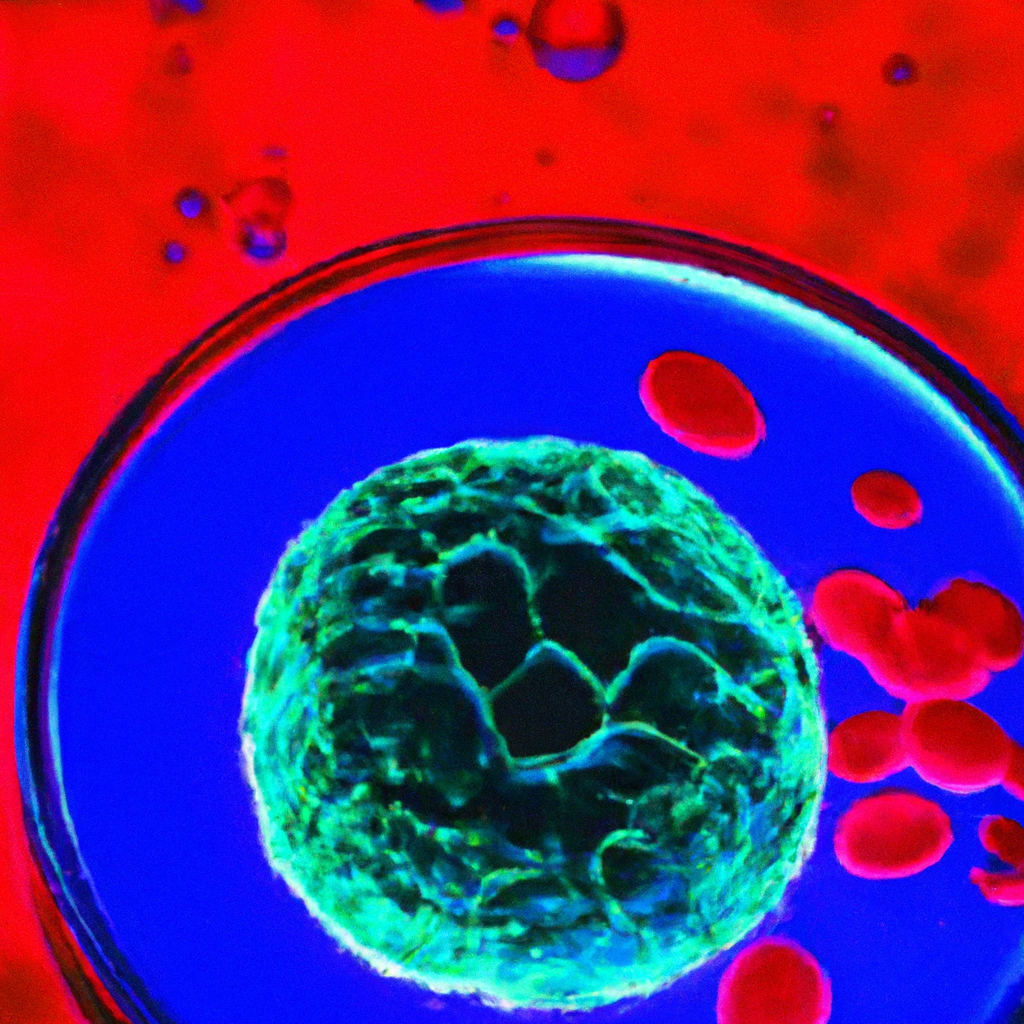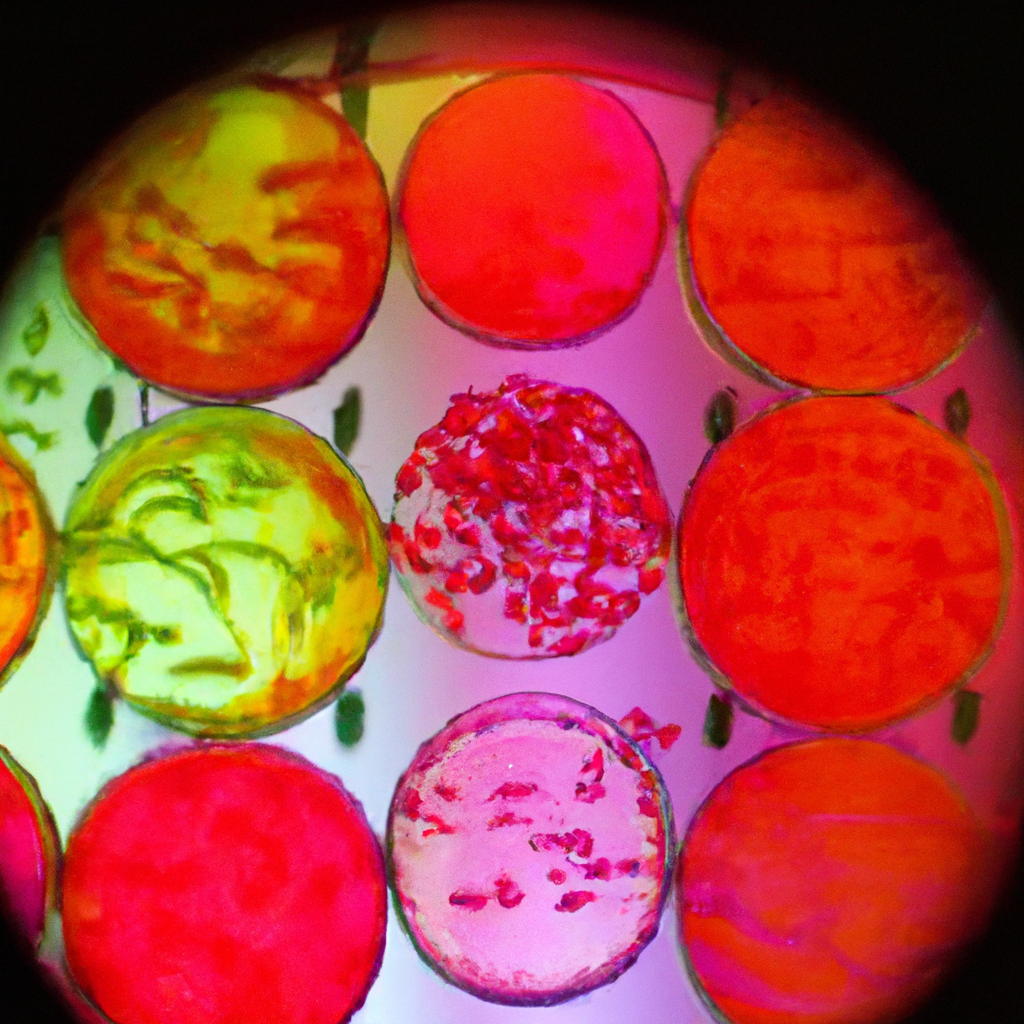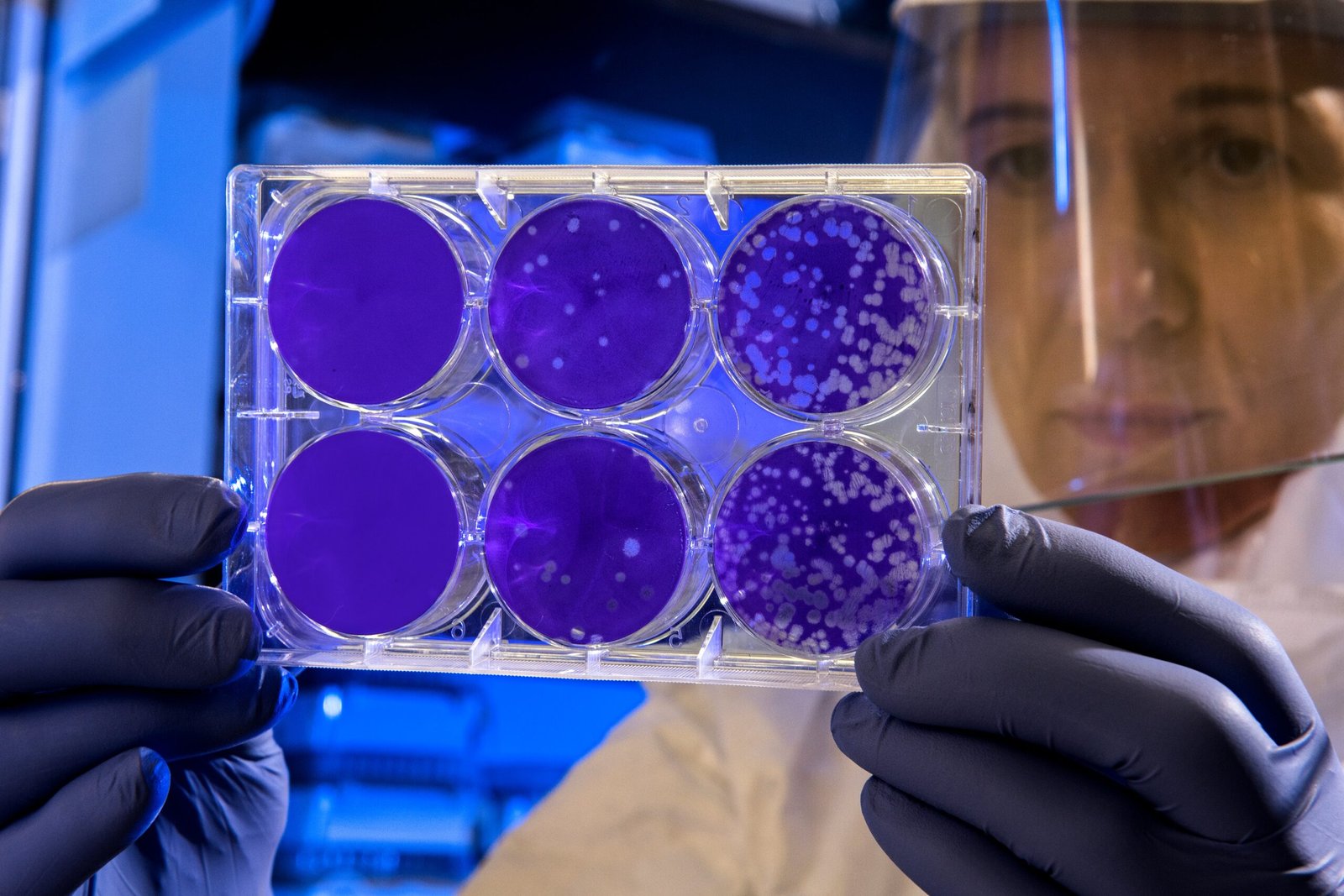If you’ve ever wondered about the exciting possibilities that stem cell research holds for Malaysia, look no further. In this article, we will explore the future potential of stem cell research in Malaysia, shedding light on the groundbreaking advancements and promising developments that are paving the way for innovative medical treatments. From the latest scientific breakthroughs to the potential impact on healthcare, join us on this journey as we delve into the fascinating world of stem cell research and its limitless possibilities for the future of Malaysia.
Challenges in Stem Cell Research
Stem cell research is a rapidly growing field that holds great potential for medical advancements and treatments. However, there are several challenges that need to be addressed in order to fully realize the benefits of this research.

Regulatory Framework
One of the main challenges in stem cell research is the development of a comprehensive regulatory framework. Stem cells have the ability to differentiate into various cell types, making them a valuable tool in regenerative medicine. However, this versatility also raises concerns about their safe and ethical use.
In order to address these concerns, it is crucial to establish clear guidelines and regulations that govern the collection, storage, and use of stem cells. This includes ensuring that informed consent is obtained from donors, and that research is conducted in an ethically responsible manner.
Ethical Considerations
Ethics is another important aspect of stem cell research. The use of certain types of stem cells, such as embryonic stem cells, raises ethical concerns due to the destruction of embryos during the extraction process. These concerns have led to debates and restrictions in many countries.
In order to navigate these ethical considerations, it is essential for researchers to explore alternative sources of stem cells, such as adult stem cells and induced pluripotent stem cells. Additionally, ongoing dialogue and collaboration between researchers, policymakers, and ethicists is necessary to address any ethical concerns that may arise.
Public Perception
Public perception plays a significant role in shaping the future of stem cell research. Due to the promising nature of this field, there is often a high level of public interest and excitement. However, there are also misconceptions and concerns that can impact public support.
One challenge is the need to effectively communicate the potential benefits and risks of stem cell research to the public. By providing accurate and accessible information, researchers can help educate the public and build trust in the field. This can help alleviate concerns and foster support for further research and development.
Funding Constraints
Like many areas of scientific research, stem cell research requires significant funding in order to make progress. Unfortunately, securing adequate funding can be a challenge.
In Malaysia, where stem cell research is still in its early stages, limited funding opportunities can hinder the advancement of research and the translation of discoveries into clinical applications. This underscores the importance of government support and the need for collaboration with industry and international partners.
Current State of Stem Cell Research in Malaysia
Malaysia is making significant strides in the field of stem cell research, with several research institutions and facilities dedicated to advancing this area of study.
Research Institutions and Facilities
Several universities and research centers in Malaysia have established dedicated stem cell research laboratories. These institutions provide state-of-the-art facilities and equipment, as well as a supportive research environment for scientists and researchers.
Prominent research institutions include the National University of Malaysia (UKM), Universiti Putra Malaysia (UPM), and the Malaysian Stem Cell Registry, among others. These institutions are actively engaged in cutting-edge research and are contributing to the global stem cell community.
Focus Areas
Stem cell research in Malaysia is diverse, with a focus on various areas of study. This includes regenerative medicine, the treatment of genetic disorders, cancer therapies, and organ transplantation.
Researchers are exploring the potential of stem cells for regenerating damaged tissues and organs, which could have significant implications for the treatment of various diseases and injuries. Additionally, the use of stem cells in cancer research offers new possibilities for targeted therapies and personalized medicine.
Collaboration and Networking
Collaboration and networking play a crucial role in advancing stem cell research in Malaysia. Research institutions and scientists actively collaborate with international partners, participate in scientific conferences and workshops, and engage in knowledge-sharing activities.
By collaborating with experts from around the world, Malaysian researchers can leverage their expertise and resources to enhance their own research capabilities. This international collaboration fosters innovation and opens up new avenues for exploration and discovery.
Regulatory Environment
In Malaysia, stem cell research is governed by a regulatory framework to ensure the ethical and safe use of stem cells. The Ministry of Health is responsible for overseeing the regulation and licensing of stem cell therapies in the country.
Regulations cover various aspects, including the collection, storage, and transplantation of stem cells. These regulations aim to protect the wellbeing of patients and ensure the quality and safety of stem cell therapies.
Government Support and Funding
The Malaysian government recognizes the importance of stem cell research and actively supports its development through various initiatives and policies.
National Policies
The Malaysian government has implemented national policies that aim to promote and support stem cell research. These policies provide a framework for regulating research activities and funding allocation.
The National Stem Cell Policy, for example, outlines guidelines for the ethical use of stem cells and establishes a system for monitoring and evaluating stem cell research and therapies. This policy sets the foundation for responsible and accountable stem cell research in Malaysia.
Research Grants
Funding is essential for the progress of stem cell research, and the Malaysian government provides research grants to support scientists and researchers in their endeavors. These grants enable researchers to pursue their projects and contribute to the advancement of stem cell research in Malaysia.
Several funding agencies, such as the Ministry of Science, Technology, and Innovation (MOSTI) and the Ministry of Higher Education (MOHE), offer competitive research grants targeting stem cell research. These grants provide financial support for various aspects of research, including laboratory equipment, personnel, and research materials.

Incentives for Industry Engagement
To encourage collaboration between academia and industry, the Malaysian government offers incentives for industry engagement in stem cell research. This includes tax incentives, grants, and partnerships with industry players.
By fostering collaboration between researchers and industry partners, the government aims to accelerate the translation of research findings into practical applications. This collaboration has the potential to spur economic growth and attract investments in the stem cell sector.
International Collaborations
The Malaysian government recognizes the value of international collaborations in advancing stem cell research. To facilitate these collaborations, the government actively promotes participation in international research programs and initiatives.
Researchers in Malaysia have the opportunity to collaborate with renowned international institutions and researchers. This exchange of expertise and resources enhances the quality and impact of research, bringing Malaysia closer to becoming a global player in stem cell research.
Potential Applications of Stem Cell Research
Stem cell research holds enormous potential for addressing various medical challenges and improving patient outcomes. In Malaysia, researchers are exploring the following potential applications of stem cells.
Regenerative Medicine
Regenerative medicine aims to repair or replace damaged or diseased tissues and organs using stem cells. Researchers in Malaysia are investigating the use of stem cells to regenerate tissues, such as bone, cartilage, and skin.
By harnessing the regenerative properties of stem cells, scientists hope to develop effective treatments for conditions such as osteoarthritis, burns, and chronic wounds. This could significantly improve the quality of life for patients and reduce the burden on healthcare systems.
Treatment of Genetic Disorders
Stem cells have the potential to provide breakthrough treatments for genetic disorders by correcting the underlying genetic abnormalities. Researchers in Malaysia are studying the use of gene-editing techniques and induced pluripotent stem cells (iPSCs) to address various genetic disorders.
By targeting the root cause of genetic disorders, scientists aim to develop personalized therapies that can improve the lives of patients with conditions such as thalassemia, muscular dystrophy, and cystic fibrosis.
Cancer Therapies
Stem cells hold promise in the field of cancer research by offering new avenues for diagnosis and treatment. Researchers in Malaysia are investigating the use of stem cells to develop targeted therapies for various types of cancer.
By leveraging the unique properties of stem cells, scientists hope to develop therapies that specifically target cancer cells while sparing healthy tissues. This could lead to more effective treatments with fewer side effects, ultimately improving outcomes for cancer patients.

Organ Transplantation
The shortage of organ donors is a significant challenge in healthcare, and stem cell research may offer a solution to this problem. Researchers in Malaysia are exploring the use of stem cells to grow organs and tissues in the laboratory for transplantation.
By using a patient’s own cells, researchers hope to overcome the challenges associated with organ rejection and reduce the reliance on organ donors. This could revolutionize the field of organ transplantation and significantly improve patients’ chances of receiving life-saving treatments.
Emerging Stem Cell Technologies
Advancements in stem cell research continue to unfold, with several emerging technologies showing great promise for various applications. In Malaysia, researchers are at the forefront of exploring these technologies.
Induced Pluripotent Stem Cells (iPSCs)
Induced pluripotent stem cells (iPSCs) are adult cells that have been reprogrammed to exhibit the characteristics of embryonic stem cells. Researchers in Malaysia are utilizing iPSCs to study diseases and develop personalized therapies.
By generating iPSCs from patients’ own cells, researchers can create disease models that closely mimic human physiology. This allows for more accurate drug testing and the development of personalized treatments tailored to individual patients.
Gene Editing Techniques
Gene editing techniques, such as CRISPR-Cas9, hold enormous potential for advancing stem cell research. Researchers in Malaysia are using these techniques to modify stem cells and investigate the underlying mechanisms of diseases.
By precisely editing the genetic material, scientists can gain insights into the development of diseases and test potential therapeutic interventions. This technology has the potential to revolutionize precision medicine and lead to more effective treatments for a range of conditions.
Artificial Organs and Tissues
The field of tissue engineering aims to create artificial organs and tissues using stem cells. Researchers in Malaysia are exploring the use of stem cells and advanced biomaterials to engineer functional organs and tissues.
By combining stem cells with biocompatible scaffolds, scientists can create structures that mimic the architecture and function of natural organs and tissues. This has the potential to address the shortage of organs for transplantation and provide viable alternatives for patients in need.
3D Bioprinting
3D bioprinting is an innovative technology that combines stem cells, biomaterials, and 3D printing techniques to create complex living structures. Researchers in Malaysia are harnessing this technology to fabricate tissues and organs for transplantation.
By precisely depositing stem cells and biomaterials layer by layer, scientists can create intricate structures that closely resemble native tissues and organs. This has the potential to revolutionize the field of regenerative medicine and solve the organ shortage crisis.
Clinical Trials and Translational Research
Clinical trials and translational research play a crucial role in bringing stem cell therapies from the laboratory to the clinic. In Malaysia, researchers are actively engaged in these areas to bridge the gap between benchside discoveries and bedside applications.

Progress and Success Stories
Clinical trials involving stem cell therapies have shown promising results in various areas. In Malaysia, researchers have successfully conducted clinical trials for conditions such as ischemic heart disease, diabetic foot ulcers, and spinal cord injuries.
These trials have demonstrated the safety and efficacy of stem cell therapies, paving the way for further research and potential treatments. The progress made in clinical trials is a testament to the dedication and perseverance of researchers in Malaysia.
Challenges and Limitations
Despite the progress made in clinical trials, there are still challenges and limitations that need to be overcome. One challenge is the variability in outcomes observed in different patients, which can make it difficult to establish consistent treatment protocols.
Another limitation is the high cost associated with stem cell therapies, which can limit accessibility for many patients. Additionally, there is still a need for long-term follow-up studies to ensure the safety and long-term efficacy of these therapies.
Patient Recruitment and Ethics
Patient recruitment is a critical aspect of clinical trials, and stem cell research is no exception. In Malaysia, researchers face challenges in recruiting suitable patients for trials, particularly when it comes to rare diseases or specific patient populations.
Furthermore, ensuring the ethical conduct of clinical trials is paramount. Researchers must obtain informed consent from participants and adhere to ethical guidelines to protect the rights and well-being of patients.
Regulatory Processes
The regulatory processes surrounding clinical trials for stem cell therapies are designed to safeguard patient safety and ensure the quality of treatments. In Malaysia, clinical trials involving stem cell therapies are subject to rigorous regulatory oversight.
The Ministry of Health is responsible for evaluating and approving clinical trial protocols to ensure compliance with ethical and safety standards. This ensures that patients participating in clinical trials are protected and that the therapies being tested are of the highest quality.
Commercialization of Stem Cell Therapies
Commercialization is an important aspect of stem cell research, as it allows for the translation of discoveries into practical applications. In Malaysia, efforts are being made to facilitate the commercialization of stem cell therapies.
Licensing and Intellectual Property
The commercialization of stem cell therapies requires the appropriate licensing and protection of intellectual property. In Malaysia, researchers and companies can seek patent protection for their inventions through the Intellectual Property Corporation of Malaysia (MyIPO).
The licensing process ensures that the rights of inventors and investors are protected, fostering innovation and attracting investment in the field of stem cell research.

Business Opportunities and Challenges
The commercialization of stem cell therapies presents both business opportunities and challenges. On one hand, there is a growing demand for effective treatments and therapies, providing a market for companies involved in stem cell research.
On the other hand, there are challenges such as the high cost of production, regulatory compliance, and market competition. Additionally, the long development timeline and strict regulations can pose challenges for companies looking to bring stem cell therapies to market.
Regulatory Pathways
Regulatory approval is a critical step in the commercialization of stem cell therapies. In Malaysia, stem cell therapies must meet the regulatory requirements set by the Ministry of Health before they can be marketed and distributed to patients.
Navigating the regulatory pathways can be complex, requiring extensive documentation and evidence of safety and efficacy. However, obtaining regulatory approval is essential to ensure that patients receive safe and effective treatments.
Quality Control and Safety Standards
Maintaining high quality and safety standards is paramount in the commercialization of stem cell therapies. Companies involved in stem cell research and therapy development must adhere to strict guidelines and standards to ensure the safety and well-being of patients.
Quality control measures, such as rigorous manufacturing processes and testing protocols, are put in place to ensure that stem cell products meet the required standards. This guarantees that patients receive safe and effective therapies.
International Collaboration in Stem Cell Research
International collaboration plays a pivotal role in advancing stem cell research. In Malaysia, researchers actively engage in collaborations with international institutions to leverage expertise and resources.
Joint Research Programs
Joint research programs between Malaysian and international institutions facilitate knowledge sharing and collaboration. These programs bring together researchers from different countries to work on common research goals and share their expertise.
By pooling resources and expertise, joint research programs foster innovation and accelerate the pace of scientific discovery. They also provide valuable networking opportunities and forge long-lasting collaborations between researchers.
Exchange of Expertise
International collaboration allows for the exchange of expertise and knowledge between Malaysian and international researchers. Through exchanges, scientists can learn from each other’s experiences and gain new insights into their respective fields.
The exchange of expertise can lead to breakthroughs in stem cell research and open up new avenues for exploration and discovery. This contributes to the overall advancement of the field and enhances Malaysia’s standing in the global stem cell research community.
Scientific Conferences and Workshops
Scientific conferences and workshops provide platforms for researchers to share their findings and discuss the latest advancements in stem cell research. Malaysia actively participates in these events, both as hosts and participants.
By attending conferences and workshops, Malaysian researchers have the opportunity to present their work, gain feedback from experts, and network with peers. These events foster collaboration and the exchange of ideas and innovations.
International Funding Opportunities
International collaborations can also open doors to additional funding opportunities. Many funding agencies and organizations offer grants and awards specifically targeted at international research collaborations.
By participating in international collaborations, Malaysian researchers can tap into these funding opportunities and secure the resources needed to advance their research. This further supports the growth and development of stem cell research in Malaysia.
Public Education and Engagement
Public education and engagement are vital in promoting understanding and support for stem cell research. In Malaysia, efforts are being made to raise awareness and address misconceptions about this field of study.
Raising Awareness
Raising awareness about the potential of stem cell research is crucial to garner public support. In Malaysia, various educational initiatives, including public talks, workshops, and media campaigns, are implemented to increase knowledge and understanding.
These initiatives aim to reach a wide audience, including the general public, policy makers, and healthcare professionals. By providing accurate and accessible information, researchers can help dispel myths and build trust in the field of stem cell research.
Addressing Misconceptions
Misconceptions about stem cell research can hinder public support and acceptance. In Malaysia, efforts are being made to address these misconceptions by providing accurate information and fostering dialogue.
Researchers and educators actively engage with the public through public forums, social media platforms, and traditional media. By addressing concerns and providing evidence-based information, they aim to promote informed discussions and dispel misconceptions.
Ethics and Responsible Research
Ethics is a critical aspect of stem cell research, and it is important to educate the public about the ethical considerations involved. In Malaysia, researchers are actively engaging in discussions about the ethical implications of stem cell research.
Public forums and debates provide opportunities for researchers and ethicists to address ethical concerns and engage in thoughtful discussions. By involving the public in these conversations, researchers can raise awareness about the importance of responsible and ethical stem cell research.
Engaging with Schools and Universities
Engaging with schools and universities is crucial in fostering interest and enthusiasm for stem cell research among the younger generation. In Malaysia, researchers actively collaborate with educational institutions to promote STEM education and create awareness about stem cell research.
Activities such as STEM workshops, school visits, and science competitions provide opportunities for students to learn about stem cell research and its potential. By inspiring the next generation of scientists, Malaysia is ensuring a bright future for stem cell research in the country.
Regulatory Framework for Stem Cell Therapies
A robust regulatory framework is essential to ensure the safety and efficacy of stem cell therapies. In Malaysia, measures are in place to regulate the development and use of stem cell therapies.
Current Regulations
In Malaysia, stem cell therapies are regulated by the Ministry of Health to ensure their safety and quality. Regulatory requirements govern various aspects of stem cell therapies, including licensing, manufacturing practices, and clinical trials.
These regulations aim to protect patients and ensure that stem cell therapies meet established safety standards. They provide a framework for responsible and ethical research, development, and use of stem cell therapies in Malaysia.
Safety and Efficacy Requirements
Stem cell therapies must meet stringent safety and efficacy requirements before they can be approved for use. In Malaysia, clinical trials involving stem cell therapies must undergo rigorous evaluation to ensure patient safety.
The Ministry of Health assesses the safety and efficacy data from clinical trials to determine whether a stem cell therapy can be approved for use. This rigorous evaluation process helps ensure that patients receive safe and effective treatments.
International Standards
As a global field, stem cell research adheres to international standards and guidelines. Malaysia takes into account these international standards when developing its own regulatory framework for stem cell therapies.
The Malaysian regulatory framework aligns with internationally recognized guidelines, such as those set by the International Society for Stem Cell Research (ISSCR) and the World Health Organization (WHO). This ensures consistency and facilitates collaboration with the global stem cell research community.
Regulatory Challenges and Future Directions
Regulating stem cell therapies poses challenges due to the unique nature of stem cells and their potential applications. Keeping up with advancements in the field, addressing ethical concerns, and balancing the need for innovation with patient safety are ongoing challenges.
In the future, regulatory frameworks will need to evolve to accommodate emerging technologies and therapies. This may involve revisiting existing guidelines, streamlining approval processes, and fostering international collaborations to share best practices.
In conclusion, stem cell research in Malaysia is rapidly evolving, with researchers making significant contributions to the field. Despite challenges in regulatory frameworks, ethical considerations, public perception, and funding constraints, the future outlook for stem cell research in Malaysia is promising. The government’s support, collaboration with international partners, and focus on potential applications and emerging technologies all contribute to the growth and advancement of stem cell research. With ongoing efforts in public education and engagement, Malaysia is poised to become a key player in stem cell research and contribute to the development of innovative therapies for the benefit of patients worldwide.




